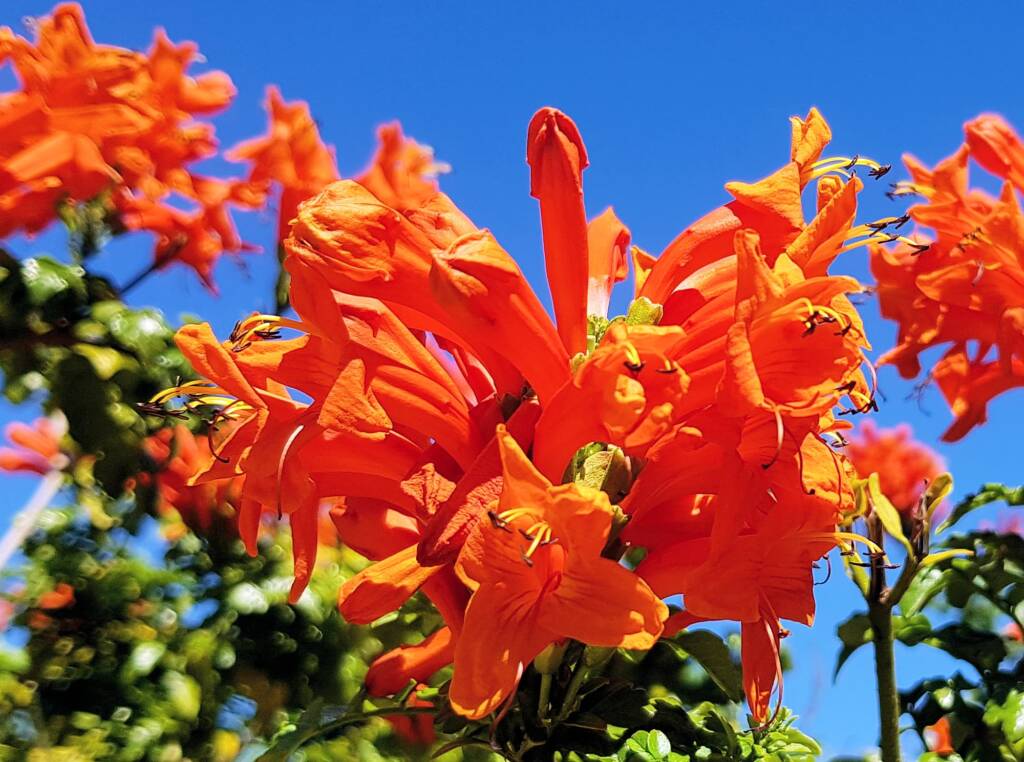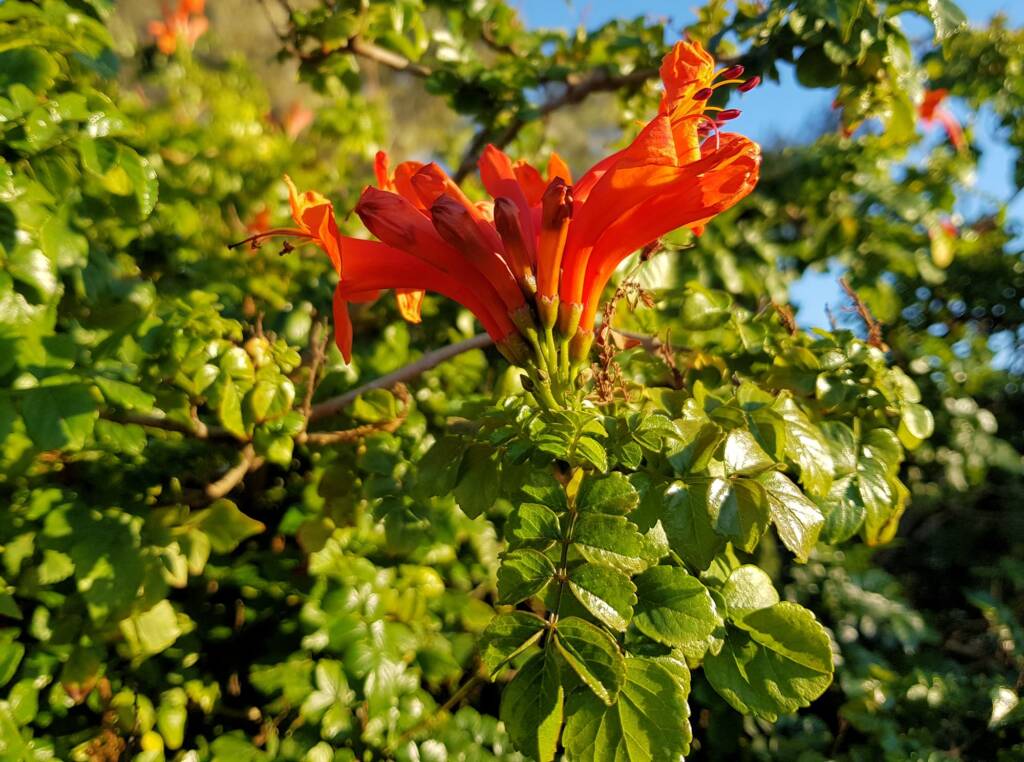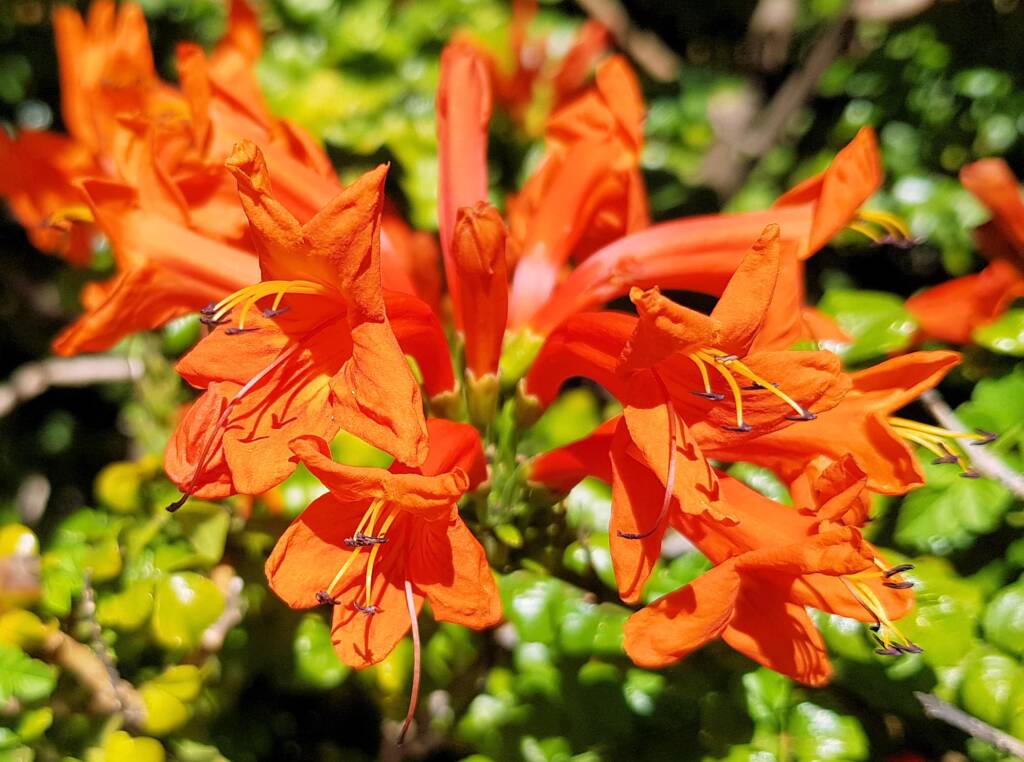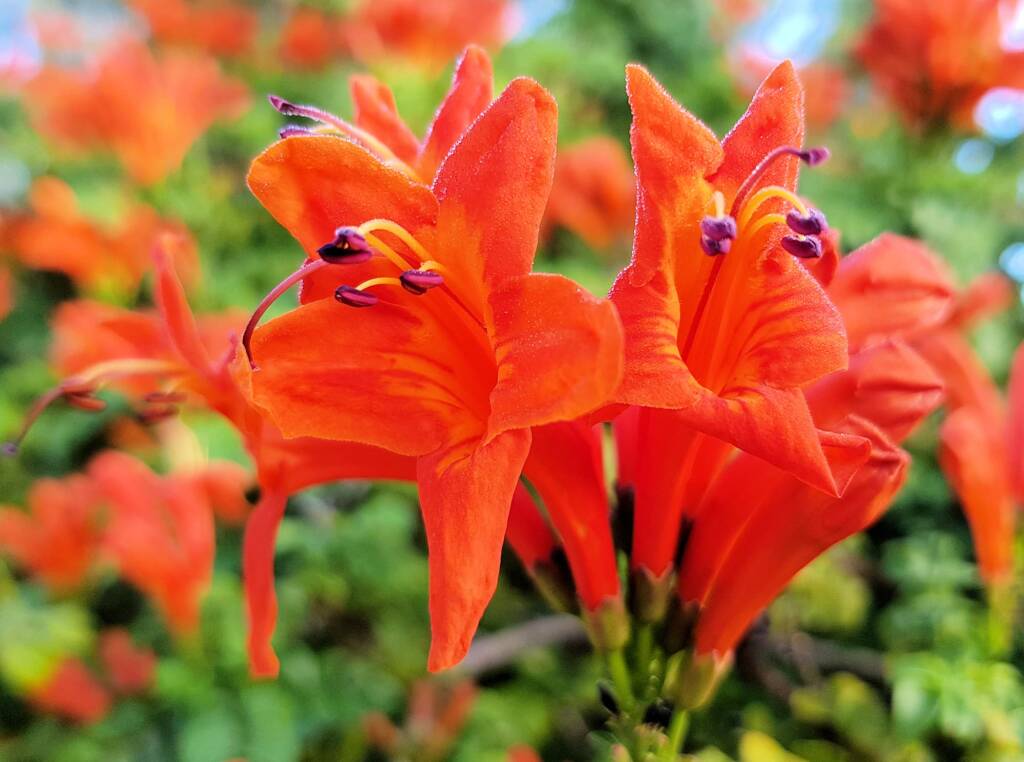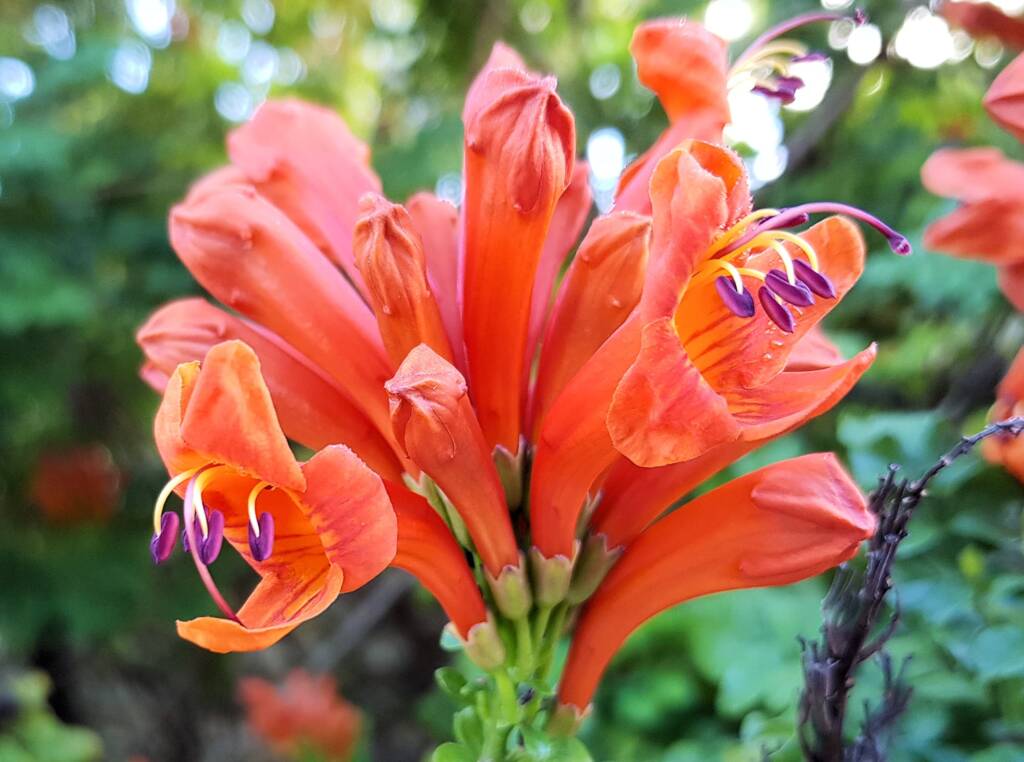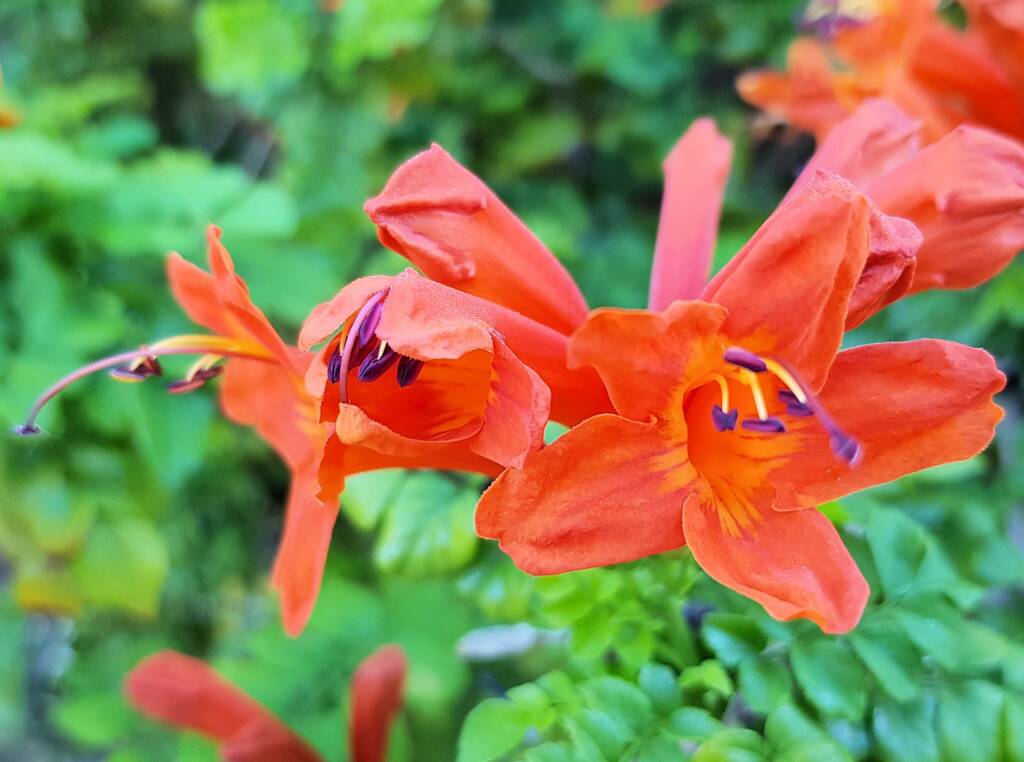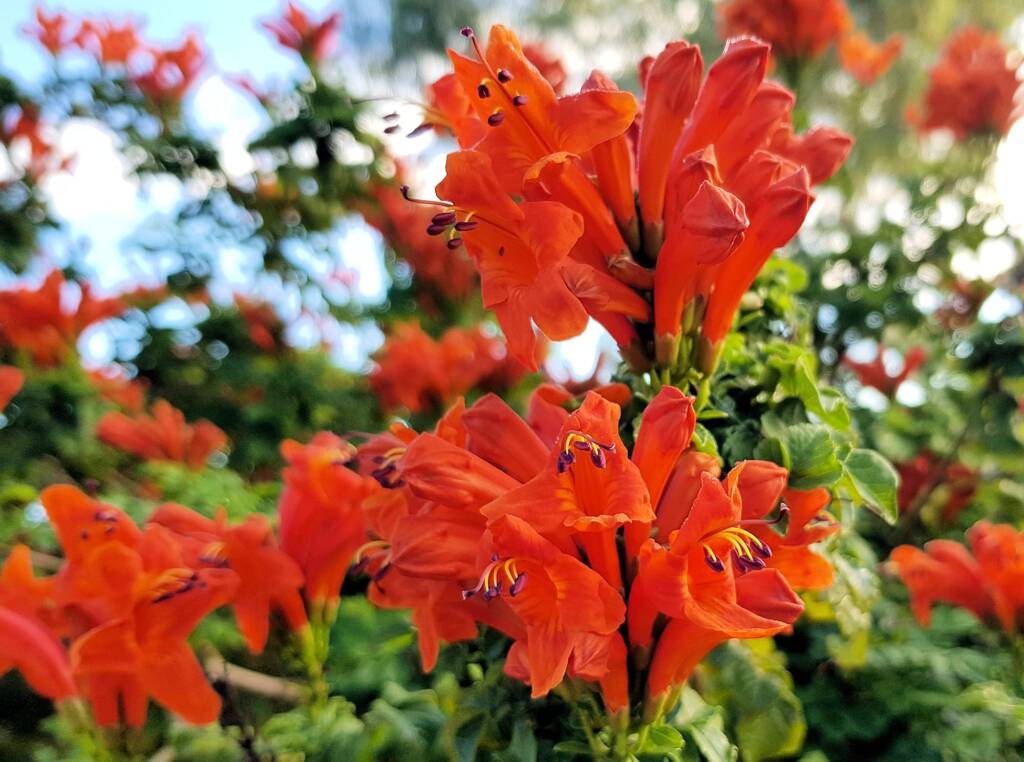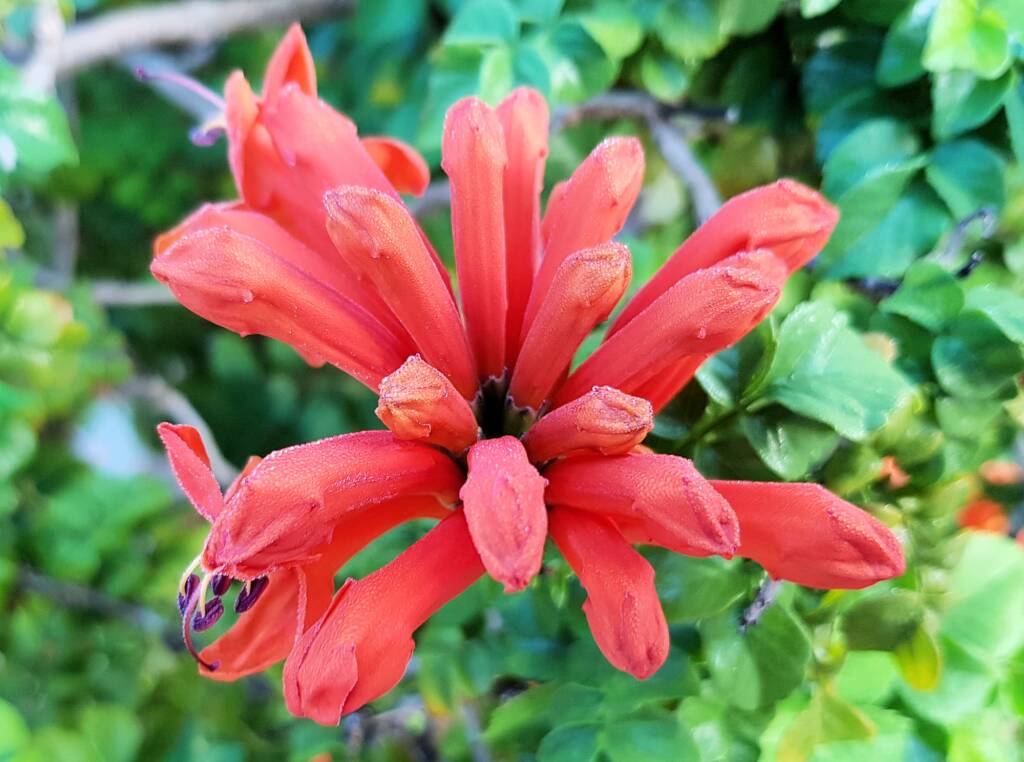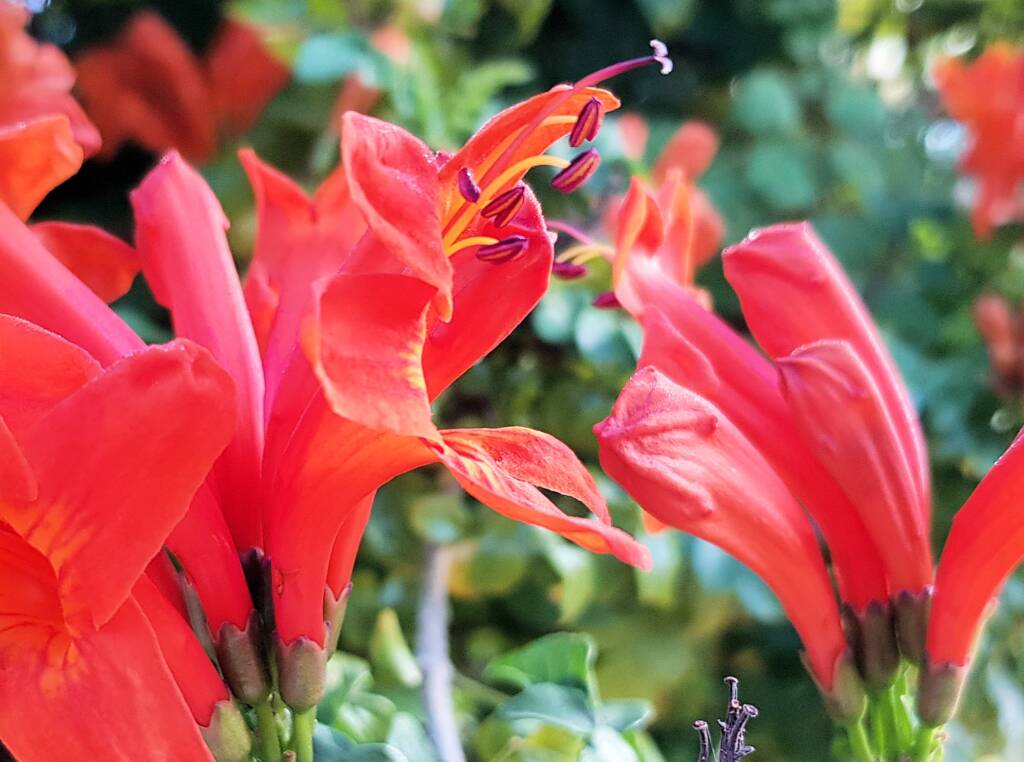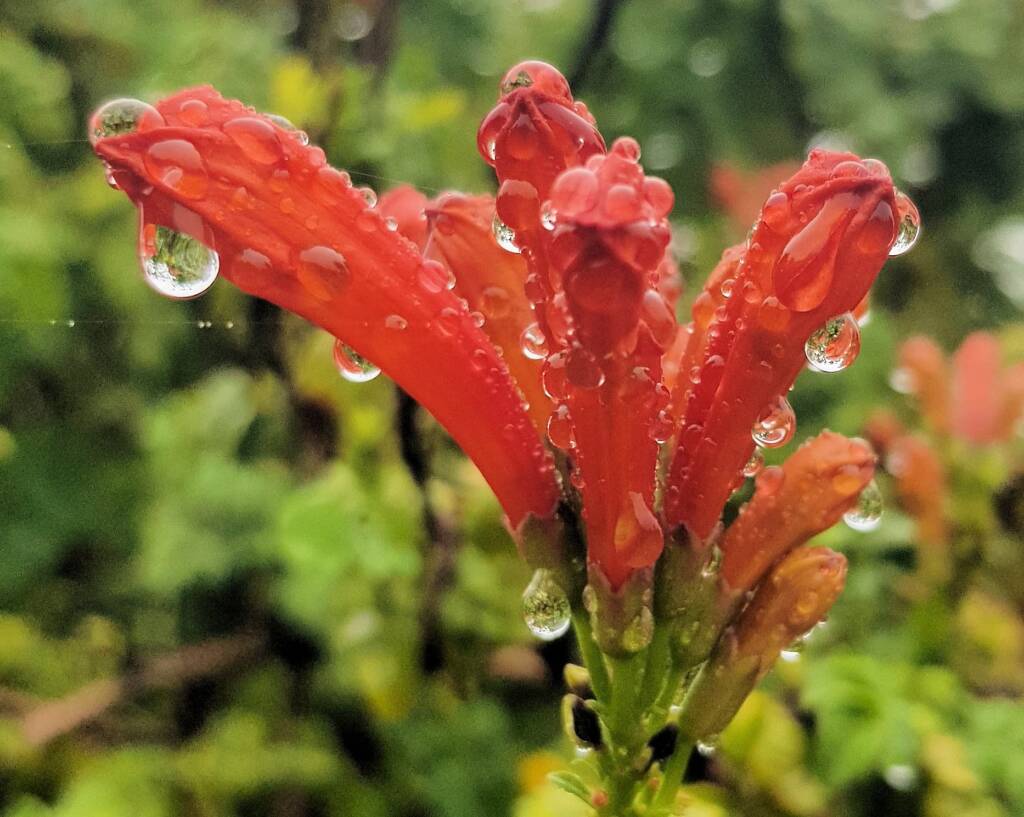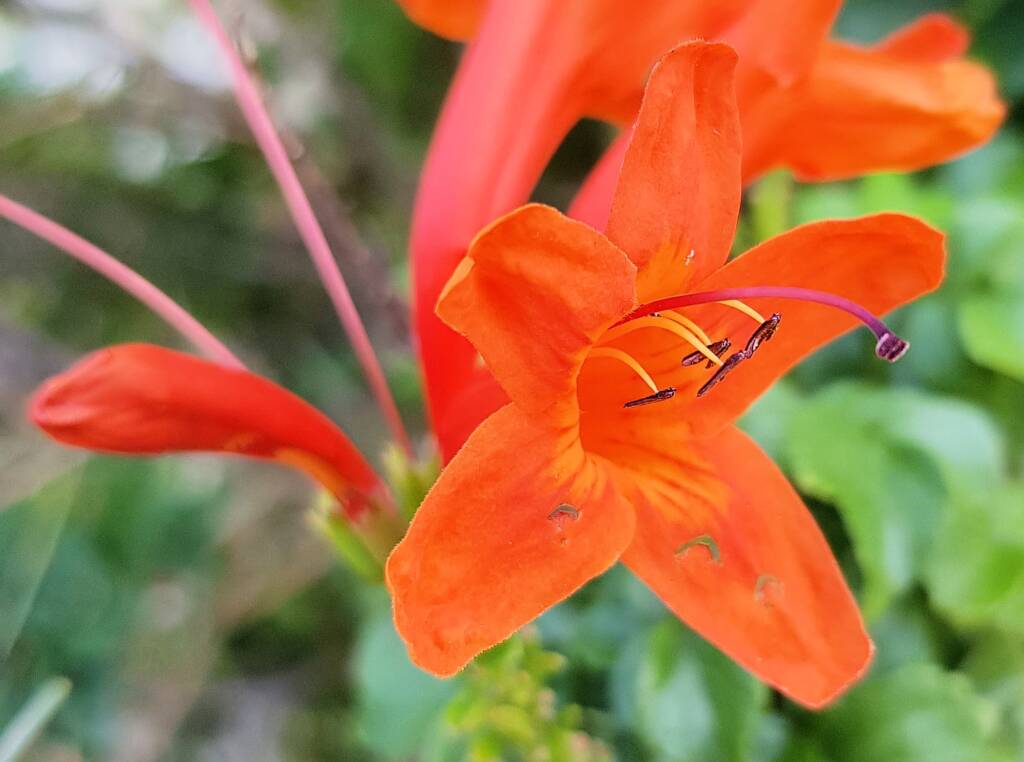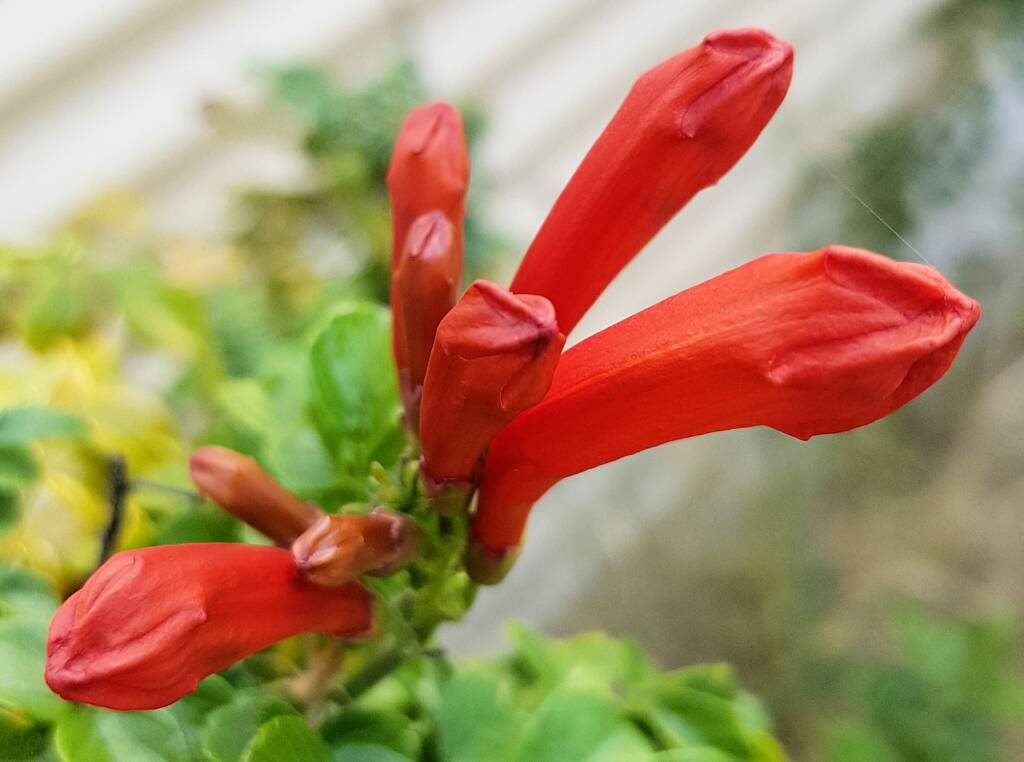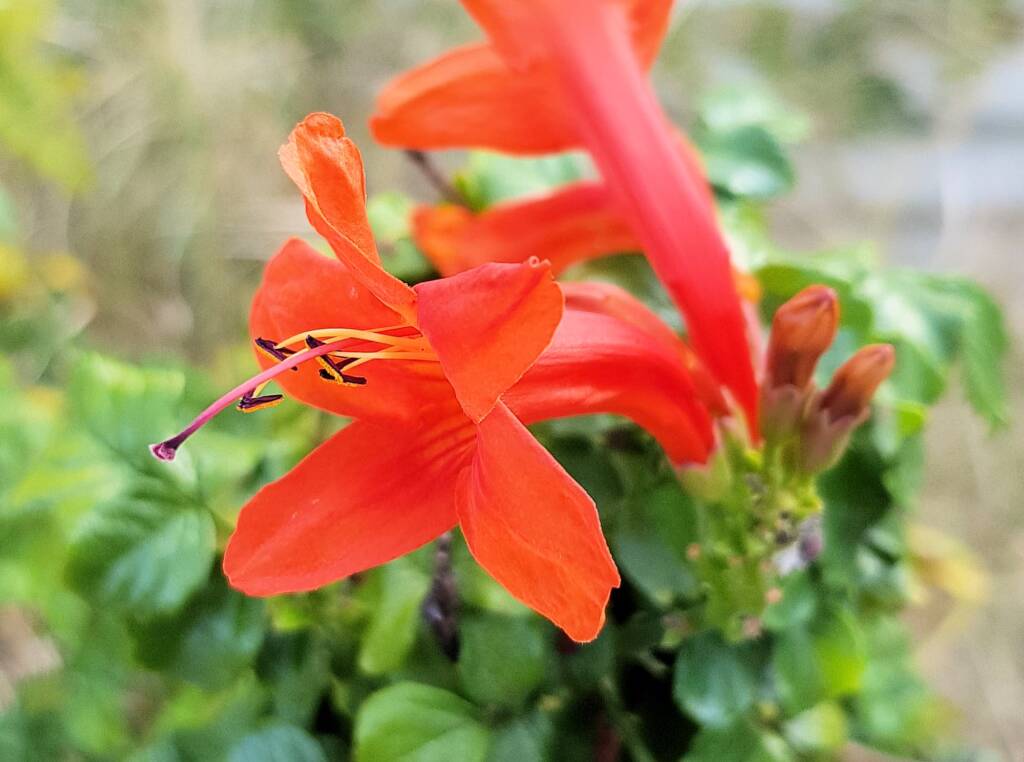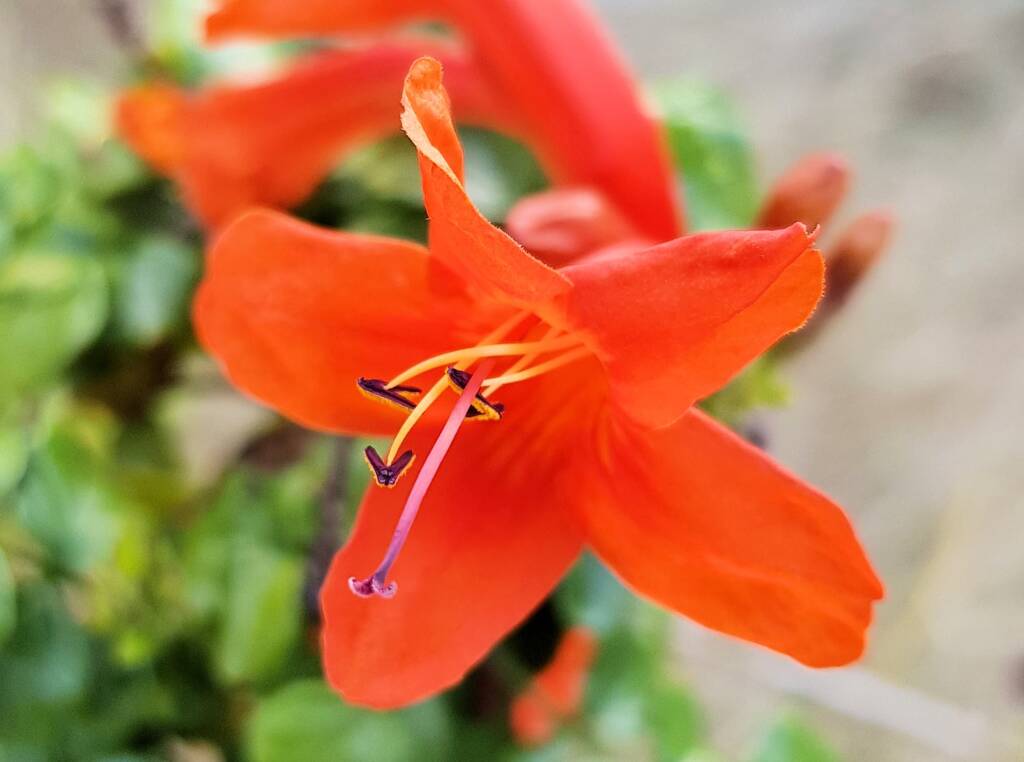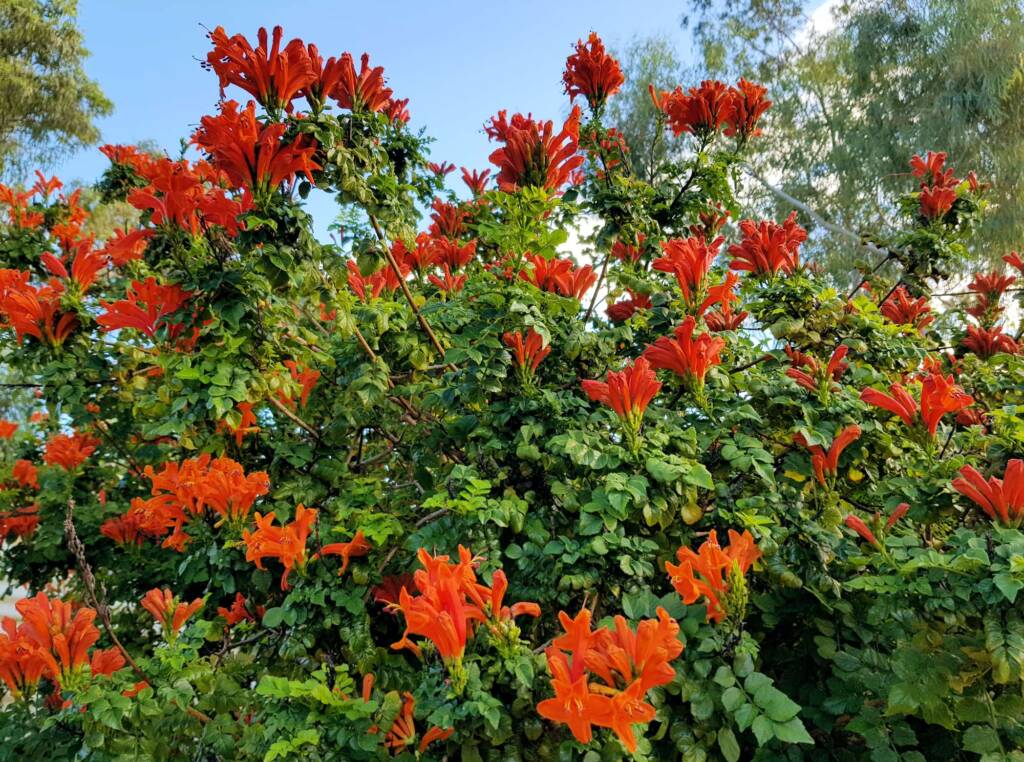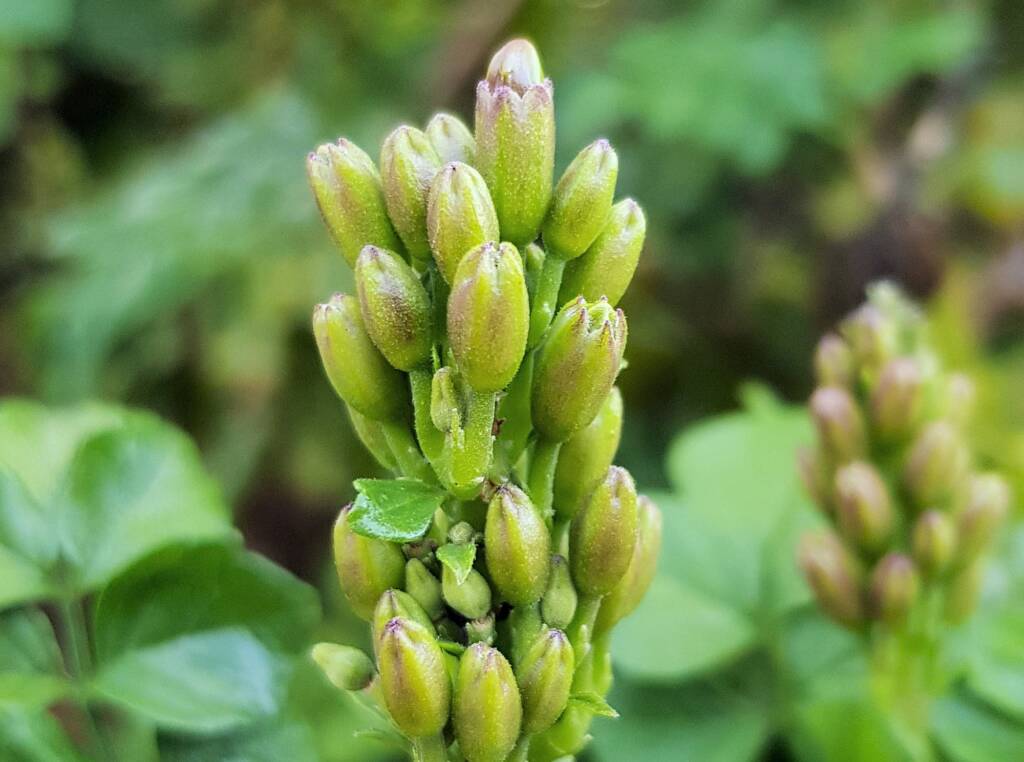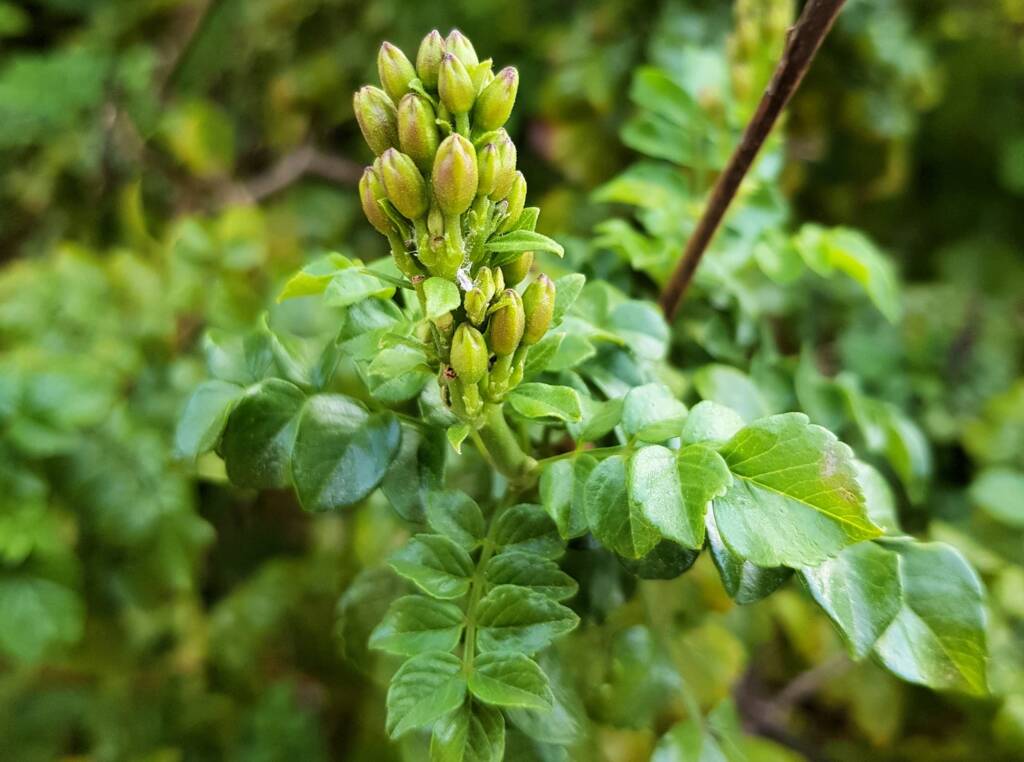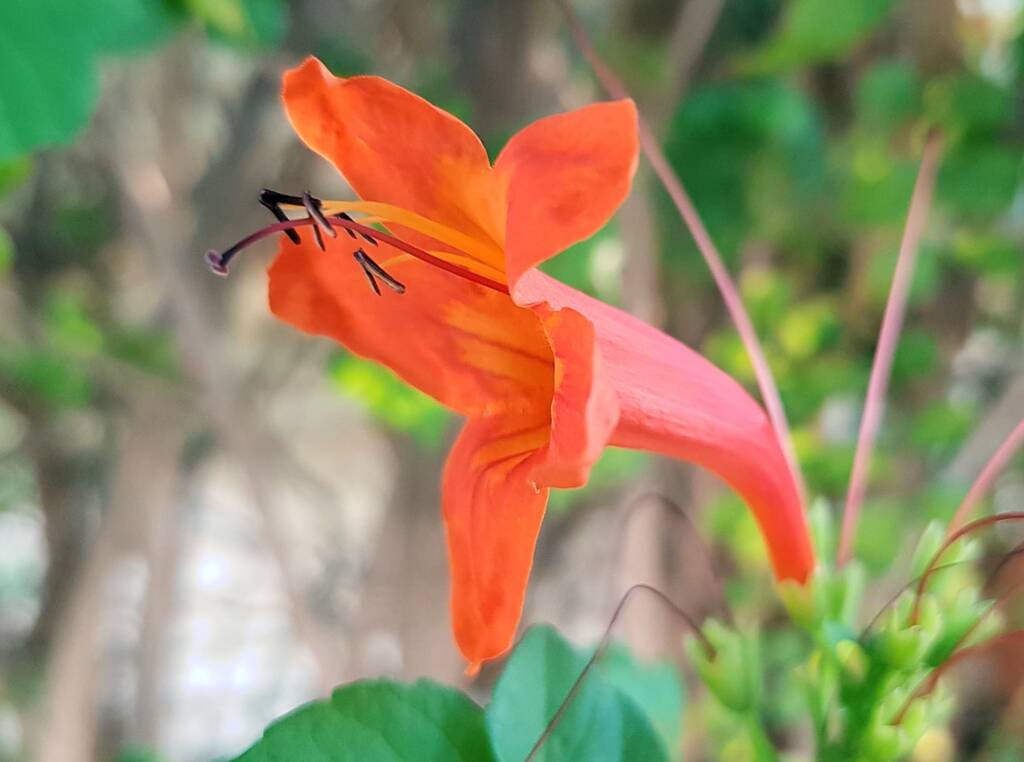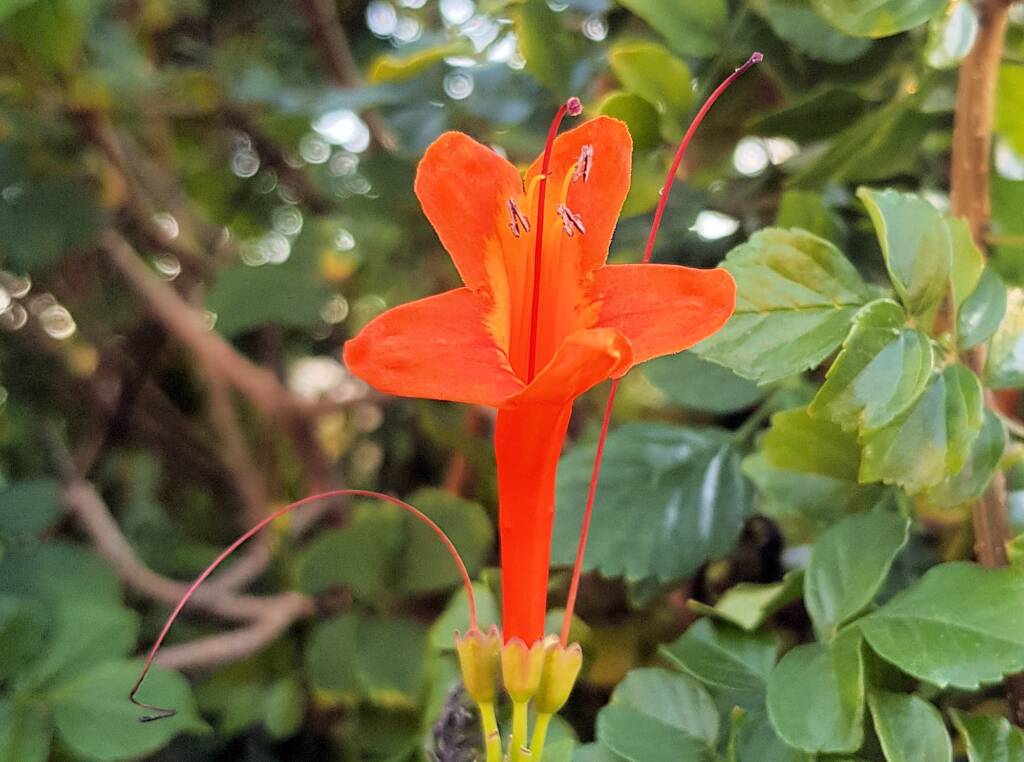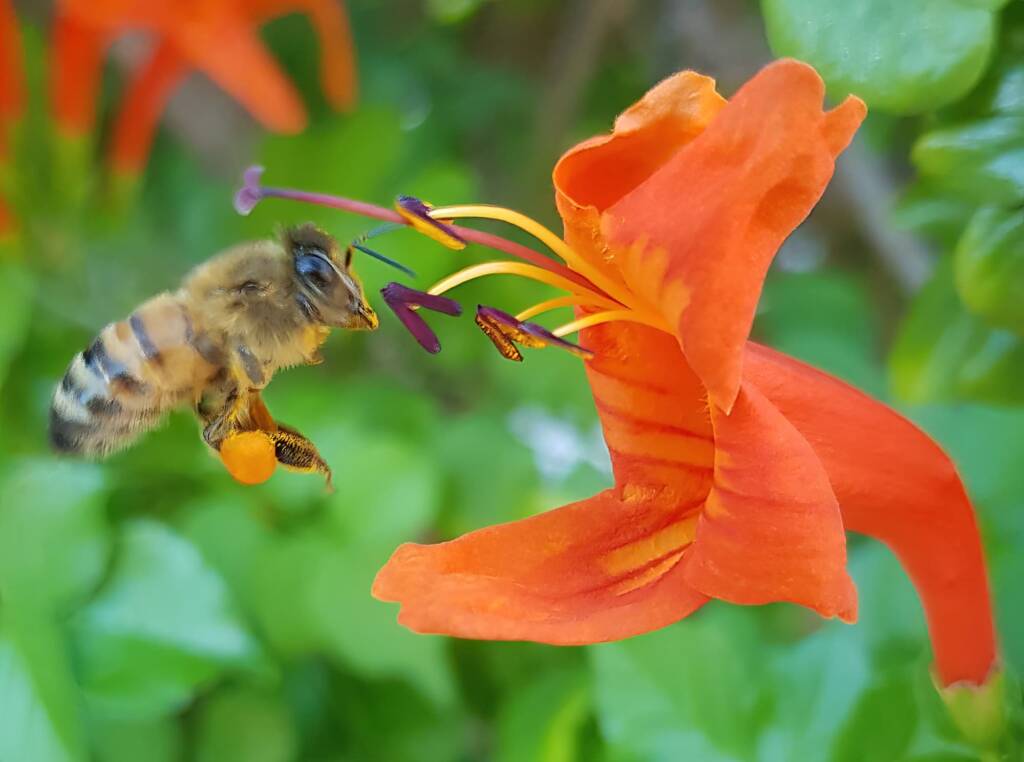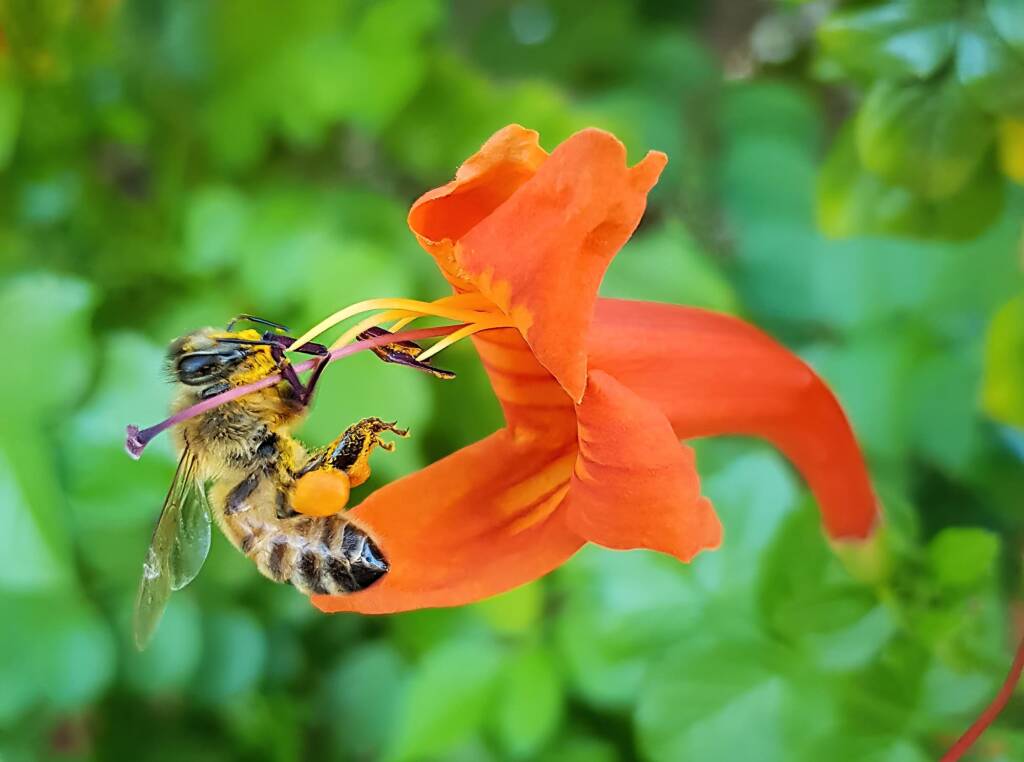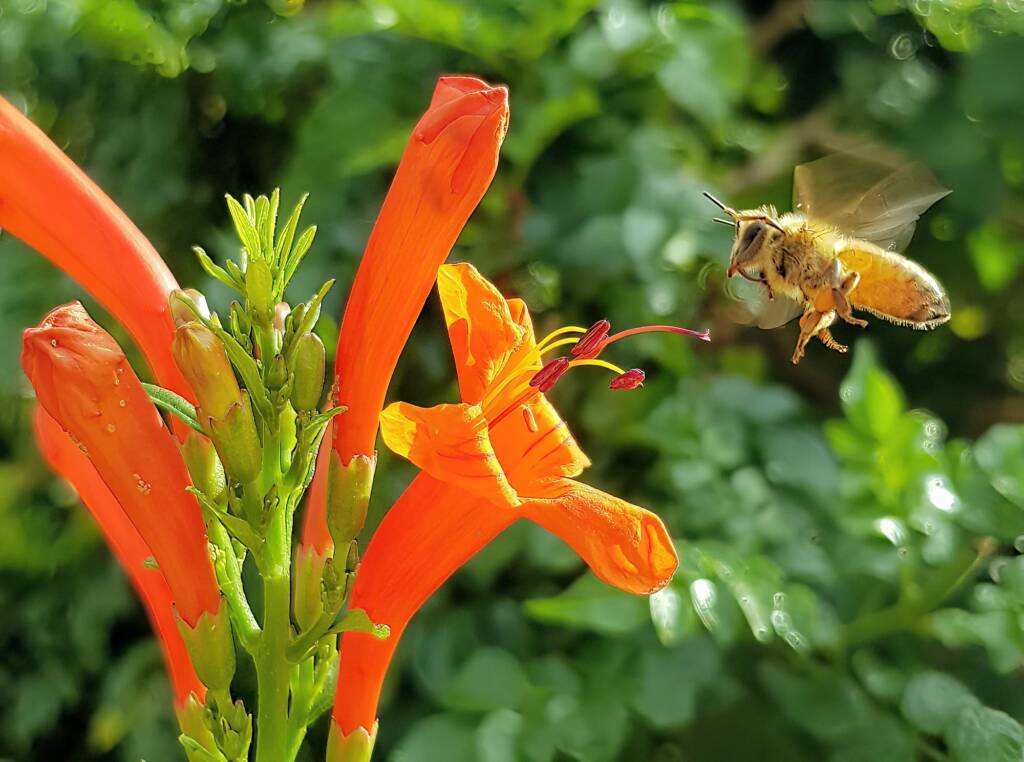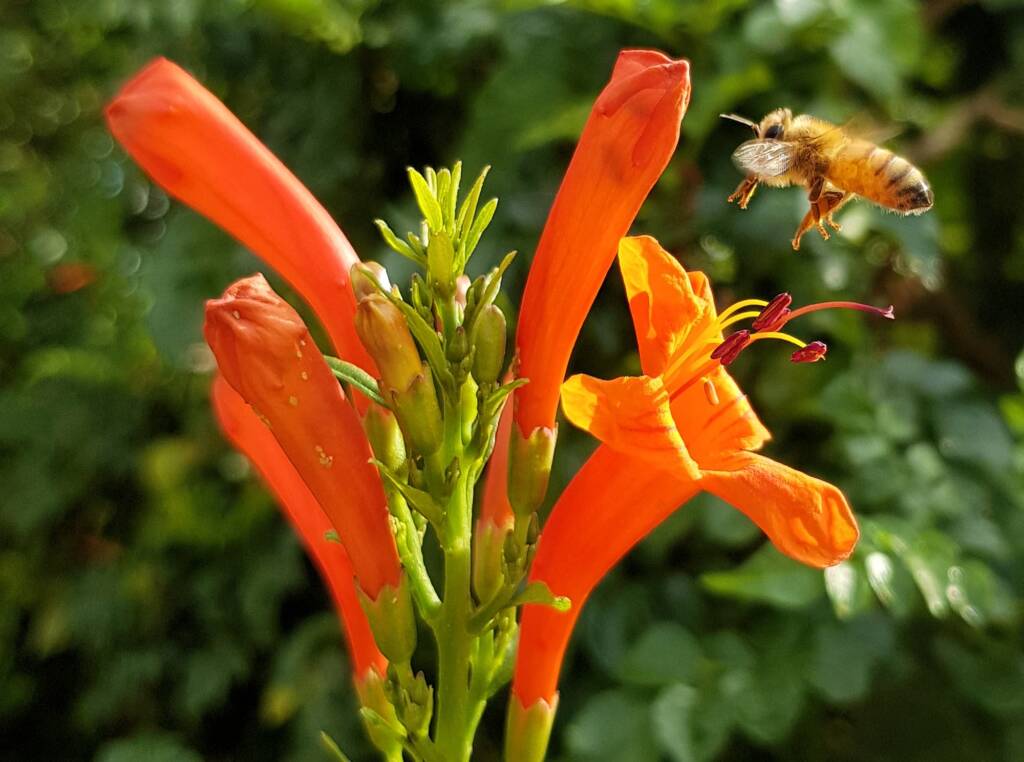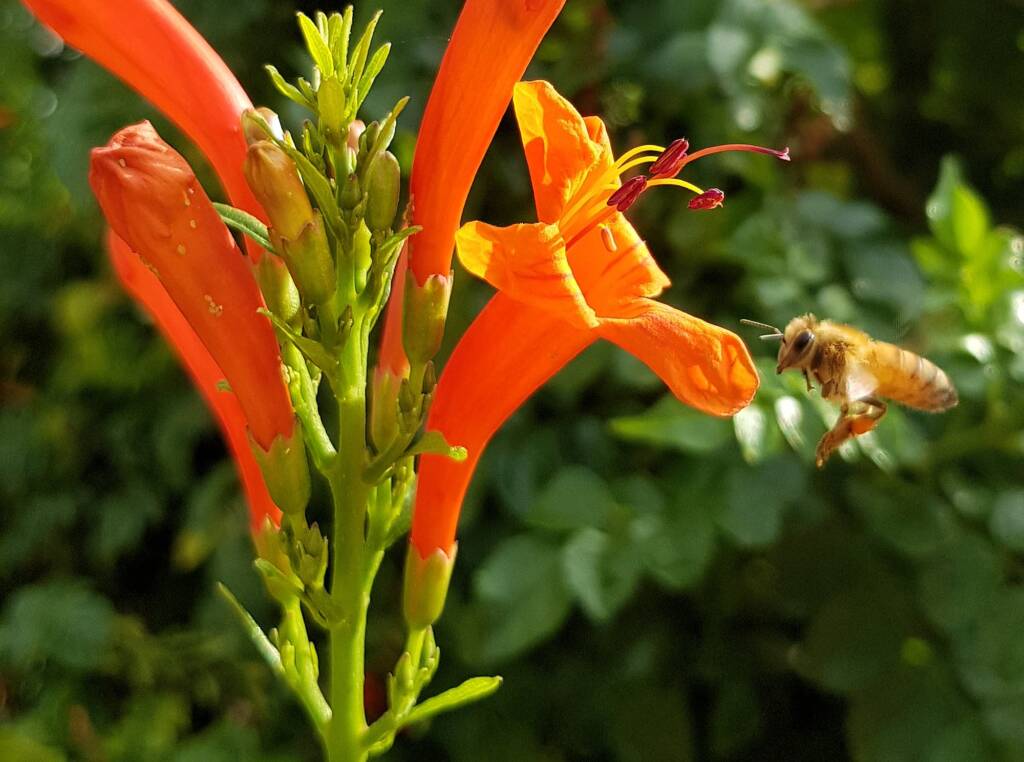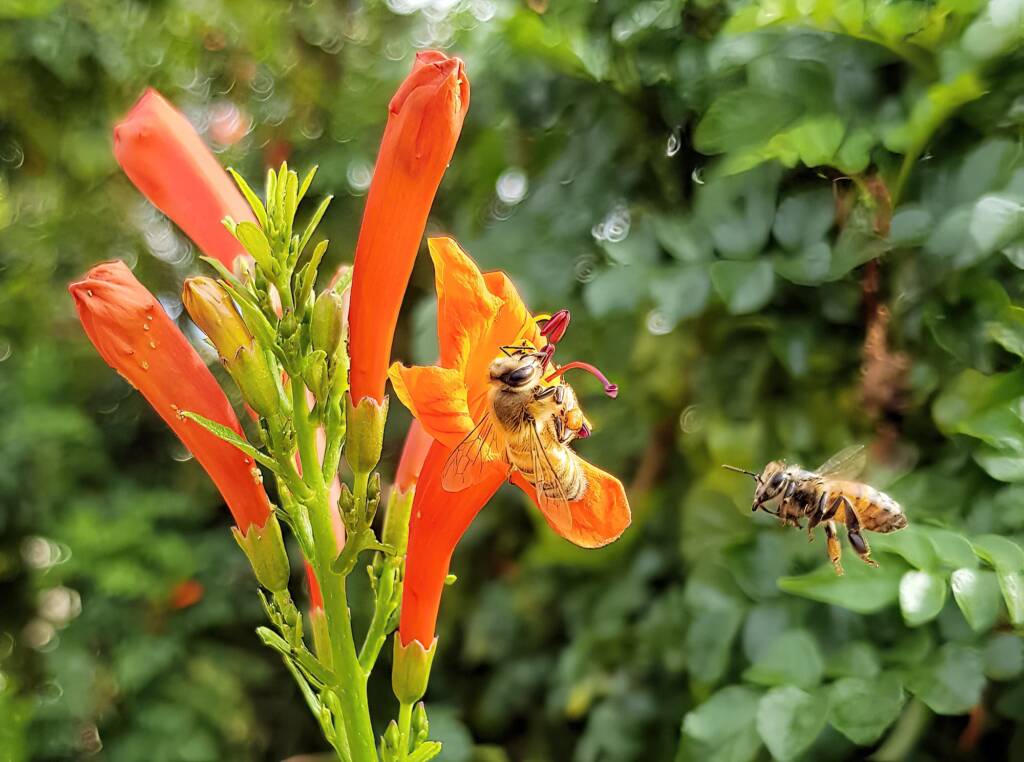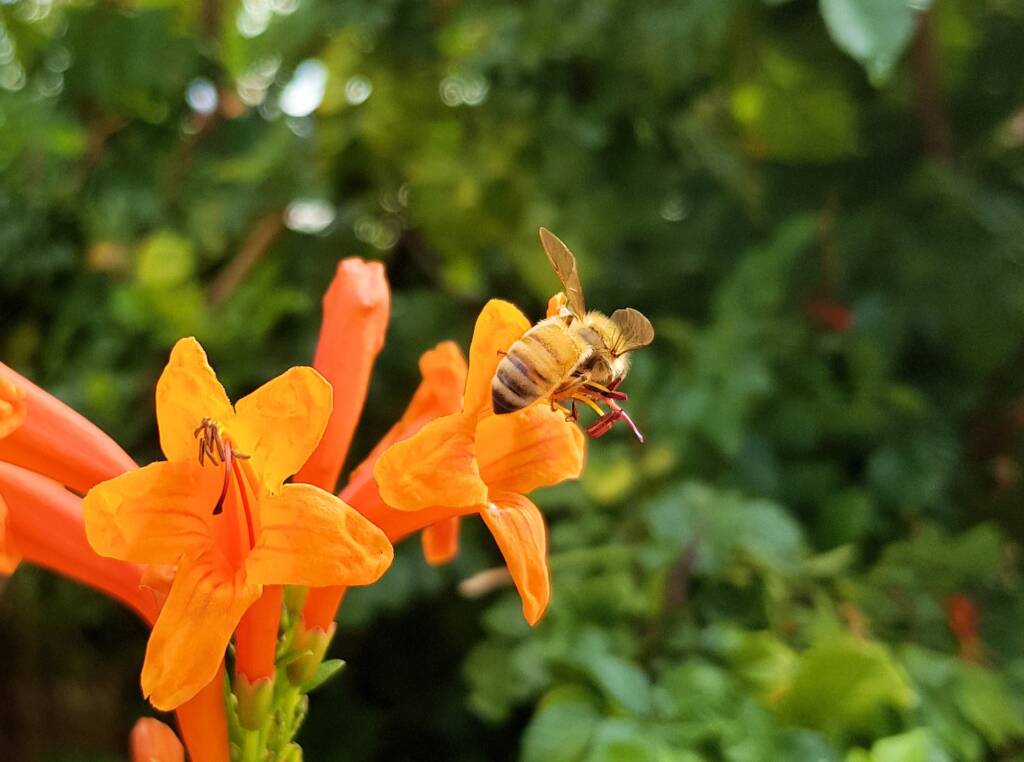An introduced South African species, Cape Honeysuckle (Tecoma capensis) has widely naturalised along the coastal regions of Australia, including eastern Queensland, coastal and central northern New South Wales, eastern Victoria and Norfolk Island. It has been identified as an invasive species in a number of countries.

A fast growing woody perennial vine/shrub, it is noted for the flowers, being able to flower at different times throughout the year. It bears several flowers borne on short terminal racemes or narrow panicles. The flowers are tubular in shape, the corolla being fused petals, creating a curved funnel-shaped, approximately 4-7 cm long. The flowers are two-lipped with five oblong spreading lobes, with colours that are a bright orange, orange-red to almost scarlet in colour.
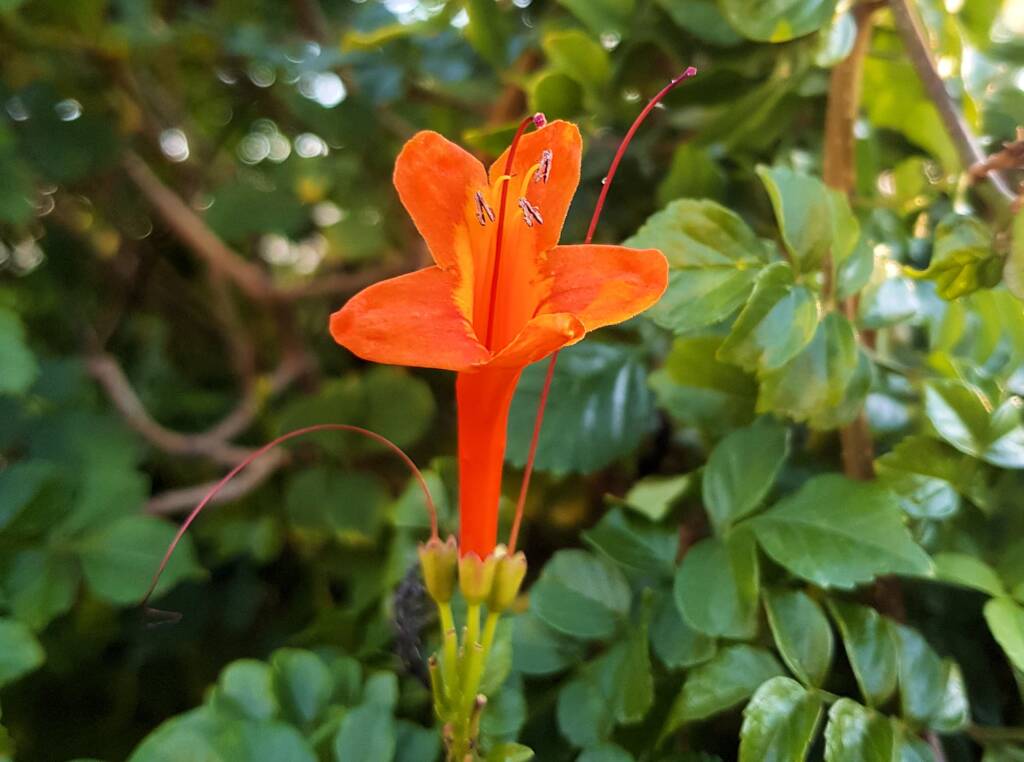
Common name
Cape Honeysuckle, Fire Flower, Flame Vine, Red Tecoma, Tecoma.
The flowers of Tecoma capensis are popular for providing pollen for certain insects such as the European Honey Bee (Apis mellifera).
- Scientific classification
- Kingdom: Plantae
- Clade: Tracheophytes
- Clade: Angiosperms
- Clade: Eudicots
- Clade: Asterids
- Order: Lamiales
- Family: Bignoniaceae
- Genus: Tecoma
- Species: Tecoma capensis
Footnote & References
- Australian Indigenous Plant Identification – many thanks to members of this Facebook group for identifying this plant, including Iain Harrison (Admin), Pat James, Beverley Hooper.
- Cape Honeysuckle (Tecoma capensis), Brisbane City Council, weedidenticationtool, https://weeds.brisbane.qld.gov.au/weeds/cape-honeysuckle
FloraFlora in Australia Flora Index Acacia Anigozanthos (Kangaroo Paws) Annual Yellowtop Apium prostratum subsp. prostratum var filiforme Apple Bush (Pterocaulon sphacelatum) Australian Bluebell Australian Gossypium Banksia Batswing Coral Tree Billy Buttons Birdsville Indigo Blue Pincushion Bush Banana Callistemon Callitris drummondii (Drummond’s Cypress Pine) Calothamnus quadrifidus Cape Honeysuckle Cassia fistula (Golden Shower) Cattle Bush Common Heath Crotalaria Darwinia wittwerorum (Wittwer’s Mountain Bell) Daviesia oppositifolia (Rattle-pea) Desert Oaks Drumsticks Eremophila Eucalyptus Ficus Flannel Cudweed (Actinobole uliginosum) Georges Indigo Goatshead Burr (Sclerolaena bicornis) Golden Everlasting Goodenia Gossypium Grass and Grasses Grass Trees Grevillea Grey Germander Hakea Kapok Bush (Aerva javanica) Lambertia sp Leptospermum MacDonnell Ranges Cycad Maireana scleroptera Mexican Poppy Minnie Daisy Mistletoe Family Nardoo Native Apricot Nicotiana megalosiphon subspecies sessilifolia Nuytsia floribunda Orange Spade Flower Orchidaceae Parakeelyas (Calandrinia) Pebble Bush (Stylobasium spathulatum) Perennial Yellow Top Pink Everlasting Pink Rock Wort Poached Egg Daisy Portulaca Proteaceae Ptilotus Quandong Resurrection Fern Rosy Dock Ruby Saltbush Santalum Solanum Spike Centaury Spinifex Storkbill (Erodum cygnorum) Striped Mint Bush Sturt’s Desert Pea Sturt’s Desert Rose Tall Saltbush Tangled Leschenaultia Tar Vine Tribulus eichlerianus Upside-down Plant Urodon dasyphylla Variable Daisy Waratah (Telopea) Wertabona Daisy White Cedar (Melia azedarach) White Indigo White Paper Daisy Wild Passionfruit Wild Stock Woolly-Headed Burr Daisy Woolly Bush Yellow-keeled Swainsona
Flora & FaunaFauna Flora Fauna Flora Funga Glossary Funga Related Topics Scientific Classification Backyard Wildlife Floral Emblems of Australia Wildflowers

